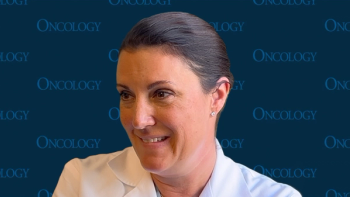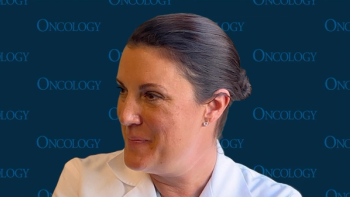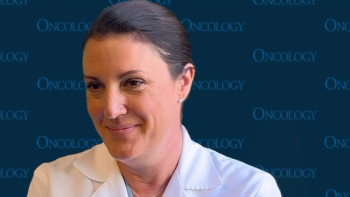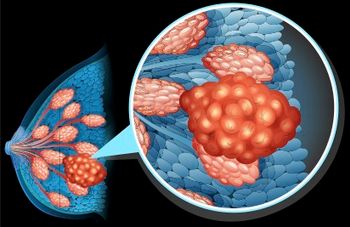
- ONCOLOGY Vol 14 No 8
- Volume 14
- Issue 8
Phase II Study of Weekly Docetaxel and Doxorubicin as First-Line Treatment of Locally Advanced or Metastatic Breast Cancer: Preliminary Results
The combination of docetaxel (Taxotere) and doxorubicin is highly effective in breast cancer, but it presents relatively high hematologic toxicity. Recent data have suggested advantages for the weekly administration of docetaxel regarding the safety
The combination of docetaxel (Taxotere) and doxorubicin is highly effective in breast cancer, but it presents relatively high hematologic toxicity. Recent data have suggested advantages for the weekly administration of docetaxel regarding the safety profile of this combination. Our objective was to evaluate (response rate and safety) the docetaxel/doxorubicin combination administered as a new schedule as first-line treatment of breast cancer.
Doxorubicin, dosed at 50 mg/m² as a 15-minute IV infusion on day 1, was followed by docetaxel (1 hour later) at 36 mg/m² as a 30-minute IV infusion on days 1, 8, and 15, every 4 weeks. Premedication included oral dexamethasone 8 mg the night before, morning of, and evening after each docetaxel infusion. In patients with operable (denoted O) breast cancer, four cycles were administered, followed by radical treatment; those patients with inoperable advanced or metastatic (denoted A) breast cancer received six cycles.
A total of 62 patients (21 O/41 A) were included, all of whom were evaluable for toxicity and 43 of whom (15 O/28 A) were evaluable for response (19 too early). The median age was 52 years (range: 2976 years). The median ECOG (Eastern Cooperative Oncology Group) performance status was 0 (range: 02). Metastatic sites (A) included soft tissues (50% of patients), bone (32%), liver (29%), and lung (24%). Seventy (O) and 212 (A) cycles were administered: 18/70 (O) and 68/212 (A) cycles had dose reductions; 23/70 (O) and 39/212 (A) cycles were delayed.
The main hematologic toxicity was neutropenia, classified as grade 3/4 in 7% of cycles and as febrile neutropenia in 4%. The main grade 3 nonhematologic toxicities were alopecia (46% of cycles), asthenia (8%), nausea/vomiting (4%), nail disorders (3%), pulmonary (1%), and stomatitis (1%). No grade 4 nonhematologic toxicity was observed.
There were 15/21 patients (O) and 28/41 patients (A) evaluable for response; of these, 5/15 (O) and 4/28 (A) achieved complete remission, and 9/15 (O) and 14/28 (A) partial remission. Given an overall response rate of 93% of evaluable patients (O) and 64% of evaluable patients (A), 1/15 (O) and 8/28 (A) had no changes and 0/15 (O) and 2/28 (A) experienced progressive disease.
CONCLUSION: This weekly docetaxel/doxorubicin combination appears to have a high efficacy in breast cancer, with mild hematologic toxicity.
Articles in this issue
over 25 years ago
Commentary on Abstract #280over 25 years ago
Commentary on Abstract #527over 25 years ago
Commentary on Abstracts #986 and #1015over 25 years ago
Commentary on Abstract #1916over 25 years ago
Commentary on Abstracts #341, #347, and #333over 25 years ago
Commentary on Abstracts #407 and #424over 25 years ago
Commentary on Abstracts #349 and #1259over 25 years ago
Commentary on Abstracts #317 and #322over 25 years ago
Commentary on Abstracts #254 and #330over 25 years ago
Commentary on Abstract #336Newsletter
Stay up to date on recent advances in the multidisciplinary approach to cancer.


















































































